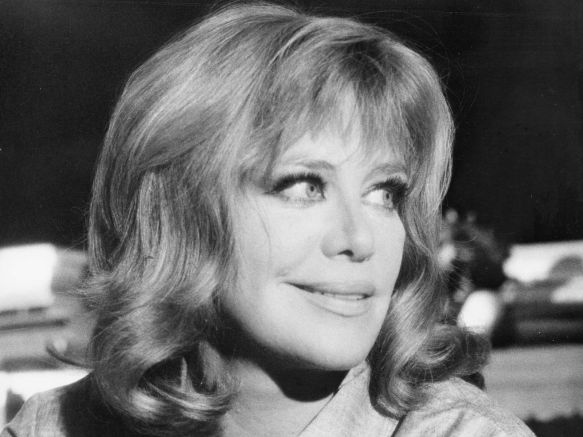Following Knef’s death, the Deutsche Kinemathek acquired her estate with funding from the Stiftung Deutsche Klassenlotterie and other sources. In 2005 it presented the exhibition “Hildegard Knef. Eine Künstlerin aus Deutschland” (Hildegard Knef: An Artist from Germany). The Hildegard Knef Archive is predominantly comprised of photos and photo albums, scrapbooks with press clippings and other written documents, as well as Knef’s wardrobe and awards.
The photo collection traces an era covering Knef’s childhood and adolescence in the 1920s and 1930s to her last public appearance in 2001. In between are almost all of Knef’s films (sometimes in complete albums), public appearances or also pictures documenting private moments with her respective partners and her daughter Tinta. Knef's artistic career can be followed and better understood through reviews and other coverage in the scrapbooks but the legendary scandals surrounding her public image are also expressed there. Her wardrobe provides a limited glimpse into the life of Hildegard Knef – it mostly consists of dresses, coats, shoes, hats and glasses from the 1980s, 1990s and early 2000s. The colourful sequined ensemble that Knef wore for her comeback with the group Extrabreit in 1993 is also among these articles of clothing.
Particularly noteworthy is the correspondence – often congratulatory notes, but also several letters ‒ among others with politicians such as Willy Brandt, Walter Scheel und Rainer Barzel or colleagues and artists including Paul Kohner, Günter Grass and Marlene Dietrich. In addition there are manuscripts for her books, including the original typescript for “Der geschenkte Gaul”, as well as diverse records and CDs, primarily with songs where she wrote the texts. In addition to the life and work of Knef, the archive also conveys an authentic view of the Federal Republic of Germany through the late 20th century. (Text: Nils Warnecke)
ContentPhotography, Small object, Paper documents, Textile, Sound recording
Dimensionapprox. 5.4 Shelf meter
Credit LineHildegard-Knef-Archiv, Deutsche Kinemathek
